
Science City Day at EMBL Hamburg
Lab Matters A major public engagement event at EMBL Hamburg attracted thousands. A video captures the spirit of the day from participants.
2024
lab-matters

Lab Matters A major public engagement event at EMBL Hamburg attracted thousands. A video captures the spirit of the day from participants.
2024
lab-matters

EMBL Announcements Bulgaria has become the latest EMBL prospect member state, starting a three-year process toward full membership. The prospect membership opens up new opportunities for mutual exchange and collaboration. Including Bulgaria, EMBL is now supported by 29 full member states, one associate member state,…
2024
embl-announcements
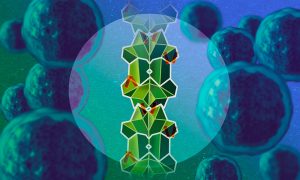
Science & Technology EMBL Hamburg scientists and collaborators discovered a new molecular mechanism in which an unstructured protein disables one of the main cancer-promoting proteins by gluing them into an elongated stack. Data from human patient samples support the role of this mechanism in prostate cancer…
2024
science-technology
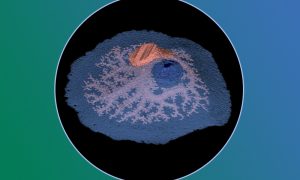
Science, Science & Technology Sponges lack muscles and neurons. Yet, they make coordinated movements. Scientists at EMBL Heidelberg have discovered that sponge movement is controlled by an ancient ‘relaxant-inflammatory’ response that is also present in vertebrate blood vessels. The findings shed light on sponge physiology…
2024
sciencescience-technology
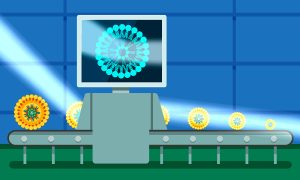
Science, Science & Technology EMBL Hamburg, Johannes Gutenberg University Mainz, Postnova Analytics GmbH, and BioNTech SE have developed a new method to quantitatively investigate sizes of nanoparticles containing mRNA. It may become an important part of regular characterisation of mRNA nanomedicines in the future.
2023
sciencescience-technology
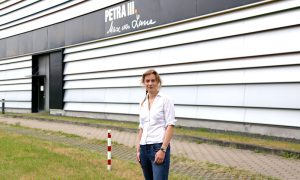
Lab Matters, People & Perspectives EMBL Hamburg is located at the PETRA III synchrotron, which in the future, will be upgraded to PETRA IV. Selina Storm is theEMBL@PETRA IV Programme Manager. Here, she speaks about her role and the benefits of PETRA IV for EMBL.
2023
lab-matterspeople-perspectives
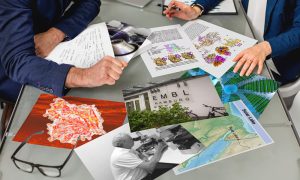
Science, Science & Technology An interdisciplinary collaboration between Hamburg scientists has yielded new insights into the structure and function of a heat-resistant enzyme from an exotic microbe. In this interview, EMBL Hamburg’s Matthias Wilmanns and TUHH’s Garo Antranikian discuss how their collaboration developed and…
2023
sciencescience-technology
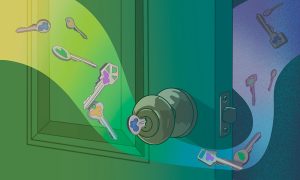
EMBLetc Promiscuity is critical for nourishment. How? This question lies at the focus of research by the Löw Group at EMBL Hamburg. Using structural biology methods, they explore how specialised molecules located in the cell membrane allow cells absorb nutrients from their environment.
2023
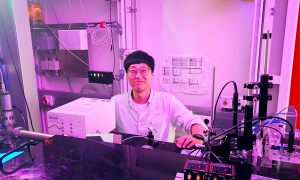
Lab Matters, People & Perspectives In this interview, Sihyun Sung, Postdoctoral Fellow at EMBL Hamburg, talks about making molecular movies with time-resolved serial X-ray crystallography, his sources of inspiration, and the value of forging deeper connections with friends and colleagues.
2023
lab-matterspeople-perspectives

Science, Science & Technology Pioneers of the mRNA nanomedicines technology receive 2023 Nobel Prize in Physiology or medicine. EMBL is pleased to have supported the development of the application of the mRNA nanomedicine technology through our long-standing collaboration with BioNTech, Johannes Gutenberg University Mainz and…
2023
sciencescience-technology
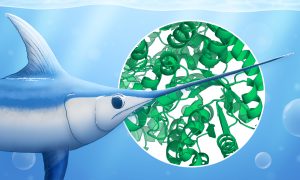
Science, Science & Technology Learn how scientists use bio-SAXS, an experimental X-ray technique, to study the shape and dynamics of proteins and other biomolecules. SAXS can be even used to analyse the structure of mineral particles in the swordfish sword bone, which can help scientists better understand bone ageing.
2023
sciencescience-technology
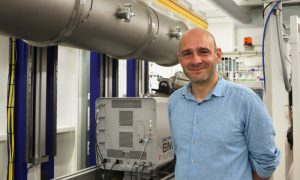
Lab Matters, People & Perspectives Clément Blanchet has been appointed to lead the team working on small-angle X-ray scattering (SAXS) at EMBL Hamburg. In this interview, he talks his ambitions for the future work of the SAXS Team, his passion for science, and a memorable ‘aha’ moment he had in his early career.
2023
lab-matterspeople-perspectives
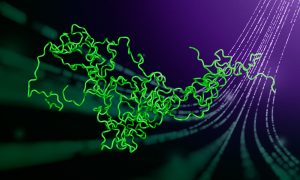
Science, Science & Technology A third of all known proteins are either completely or partially unstructured. EMBL scientists contributed to a new set of guidelines – Minimum Information About a Disorder Experiment (MIADE) – that will help researchers share data on unstructured proteins in a more useful way and will enable…
2023
sciencescience-technology

Science, Science & Technology EMBL Hamburg scientists have contributed to the development of the Spitrobot, a ground-breaking experimental setup that will simplify creating molecular movies. The Spitrobot automates the sample preparation for time-resolved crystallography, which is used to create 3D snapshots of protein…
2023
sciencescience-technology
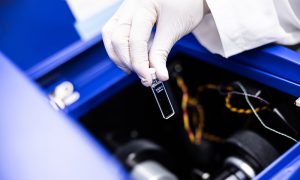
Connections, Lab Matters EMBL Hamburg partners with the Hanseatic Life Science Research Infrastructure Consortium (HALRIC) to enhance life sciences research in Scandinavia and northern Germany. The consortium builds on the HALOS project to foster collaborations between industry, hospitals, and universities, leveraging…
2023
connectionslab-matters
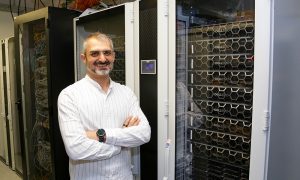
Lab Matters, People & Perspectives Eduard Avetisyan leads the EMBL Hamburg IT team. He joined EMBL after transitioning from particle physics research to IT. Besides providing standard IT user support, his team also enables smooth processing and computational analysis of structural biology data. Here, he talks about the joys and…
2023
lab-matterspeople-perspectives
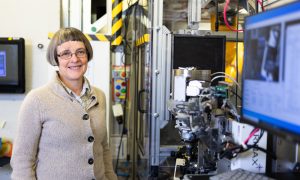
Lab Matters, People & Perspectives Biological X-ray imaging is an emerging technology that uses X-rays to image tissues or even entire organisms. It will play an important role in EMBL Hamburg’s future service portfolio, and will allow studying life on multiple scales. Team Leader Liz Duke discusses her plans to establish X-ray…
2023
lab-matterspeople-perspectives
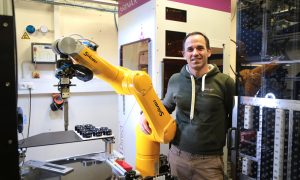
Lab Matters, Science & Technology Physicists, engineers and robotics experts work together in EMBL Hamburg’s Instrumentation Team to design instruments that support structural biology research. The team has finished a transfer robot that facilitates automated handling of protein crystals with care and precision. This will help…
2023
lab-mattersscience-technology
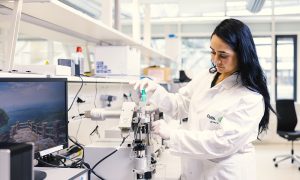
Lab Matters, Science & Technology EMBL Hamburg’s Sample Preparation and Characterisation (SPC) Facility offers scientists access to almost all available biophysics technologies. The facility’s staff provides advice and support with experiments and data analysis. The facility is conveniently located just next to the EMBL…
2023
lab-mattersscience-technology
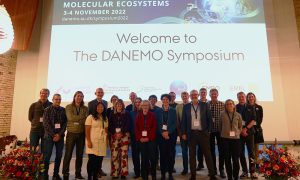
Events DANEMO is a communication platform and research support initiative launched by DANDRITE at Aarhus University. It aims to encourage scientists in Denmark to engage with EMBL and EMBO. The DANEMO symposium from 3-4 November in Aarhus focused on raising awareness of the new EMBL programme ‘Molecules…
2022
events
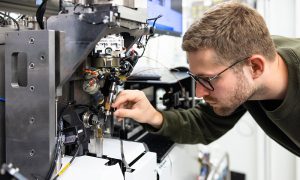
EMBLetc Kirill Kovalev, an EMBL Hamburg researcher, is studying the structure of an ancient bacterial molecule to help scientists control brain cell activity
2022

Lab Matters, Science & Technology EMBL joined a kick-off event focusing on the developments related to the upgrade of the PETRA III synchrotron storage ring to PETRA IV at the DESY campus, where EMBL Hamburg is located. PETRA IV could open new possibilities at EMBL Hamburg, contributing to the goals of the EMBL Programme…
2022
lab-mattersscience-technology

Lab Matters, People & Perspectives Jan Kosinski, Group Leader at EMBL Hamburg and one of the co-chairs of the Infection Biology theme in EMBL’s new programme, chats about how this theme will support his work and help establish new collaborations.
2022
lab-matterspeople-perspectives
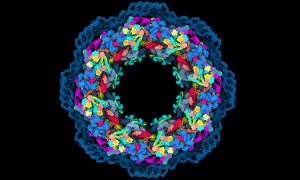
Science, Science & Technology Scientists have solved several mysteries around the structure and function of a true molecular giant: the human nuclear pore complex. They created the most complete model of the complex thanks to combining the program AlphaFold2 with cryo-electron tomography, integrative modelling, molecular…
2022
sciencescience-technology

EMBL Announcements, Lab Matters EMBL Director General Edith Heard has been elected as a foreign member of The Royal Danish Academy of Sciences and Letters in recognition of her academic excellence. Heard is among 15 new members of the Academy, which has been advancing basic research and interdisciplinarity for nearly 280 years.
2022
embl-announcementslab-matters
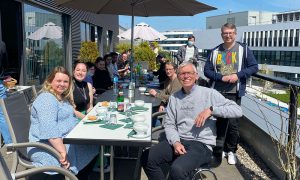
Lab Matters Students from the Business Academy Aarhus visit EMBL Hamburg annually. Many of them return later as trainees to gain experience as lab technicians. EMBL Hamburg offers great opportunities to learn diverse techniques and work with various equipment. This experience helps them in their future jobs in…
2022
lab-matters

EMBL Announcements, Lab Matters Judith Zaugg, Group Leader at EMBL Heidelberg, has been awarded an ERC Consolidator Grant of €2 million funded under the European Union’s Horizon Europe research and innovation programme. Over the next five years, the grant will enable her group to study cellular interactions in the human bone…
2022
embl-announcementslab-matters
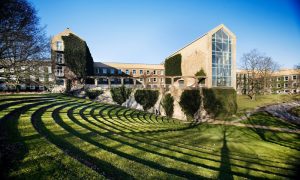
Connections, Lab Matters The 11th annual Nordic EMBL Partnership for Molecular Medicine meeting was hosted in virtual format by DANDRITE, the Danish node of the Partnership, from 31 January–2 February 2022. The programme included updates from all partnership nodes, discussions about opportunities for new collaborations,…
2022
connectionslab-matters

Science, Science & Technology EMBL Hamburg’s Grzegorz Chojnowski from the Wilmanns Group developed software called findMySequence, which identifies proteins’ amino-acid sequences based on electron cryo-microscopy and X-ray crystallography data. It’s useful for identifying unknown proteins in samples from natural sources.
2022
sciencescience-technology

Connections, Events, Lab Matters Ahead of the annual meeting of the Nordic EMBL Partnership for Molecular Medicine, we spoke with its new Speaker, Mark Daly. Mark Daly, FIMM Director, recently accepted the post of Speaker of the Nordic EMBL Partnership. He explains his vision of the future cooperation between EMBL and the Nordics.
2022
connectionseventslab-matters
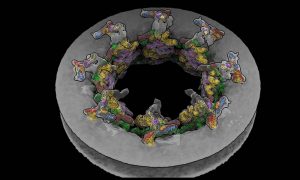
Science, Science & Technology EMBL Hamburg’s Kosinski Group, the Beck Laboratory at the Max Planck Institute of Biophysics, and colleagues at EMBL Heidelberg recorded the nuclear pore complex contracting in living cells. They visualised the movement with an unprecedented level of detail with help of new software called…
2021
sciencescience-technology
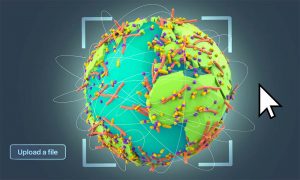
Science, Science & Technology Bork Group at EMBL Heidelberg analysed a new global gene database to study how genes emerge and spread across various habitats on our planet. In the future, the group will expand the database and use it for studying microbial gene evolution and dispersal at a finer-grained scale.
2021
sciencescience-technology

Science, Science & Technology RNA vaccines, such as the ones for COVID-19, represent a new approach in vaccine technology. Cy Jeffries, faculty staff scientist at EMBL Hamburg, explains the clever technology behind RNA vaccines, and how structural biology contributes to its development. EMBL Hamburg collaborated on several…
2021
sciencescience-technology
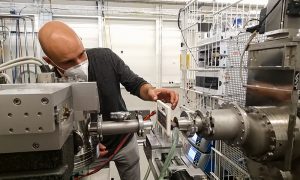
Lab Matters, Science & Technology Each year, EMBL Hamburg’s Svergun Group offers practical EMBO courses and lecture courses on biological small-angle X-ray scattering (SAXS). The courses provide young scientists an opportunity to gain hands-on experience by measuring their own samples, and by exploring different aspects of SAXS…
2021
lab-mattersscience-technology
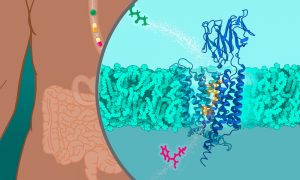
Science, Science & Technology Scientists at EMBL Hamburg determined the molecular structure of Peptide Transporters 1 and 2. The findings will enable developing drugs that more efficiently pass from the gut to target tissues.
2021
sciencescience-technology
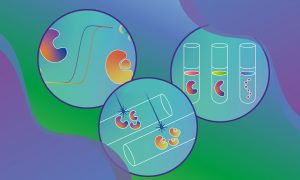
Science, Science & Technology EMBL Hamburg’s Sample Preparation and Characterisation (SPC) Facility has released eSPC, an online platform for analysing data from biophysical experiments. The platform enables the scientific community to analyse data from different experiments without the need to travel.
2021
sciencescience-technology
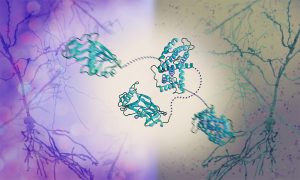
Science, Science & Technology The Graham and Crump groups at the University of Cambridge and the Svergun Group at EMBL Hamburg have discovered a mechanism by which the herpes simplex virus takes control of the molecular machinery of human cells. Their work reveals how a dedicated viral protein hijacks key host proteins, forcing…
2021
sciencescience-technology
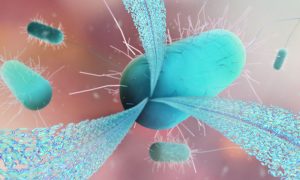
Science, Science & Technology Structural biology provides insights into the diverse functions of fibrous protein in humans, amphibians, and bacteria.
2021
sciencescience-technology

Connections, Lab Matters EMBL and Helmholtz Association have signed a memorandum of understanding. The expanded collaboration of both institutions will focus on research related to health.
2021
connectionslab-matters

Lab Matters, People & Perspectives The new team leader at EMBL Hamburg talks about her plans to establish biological X-ray imaging and high-throughput tomography.
2021
lab-matterspeople-perspectives
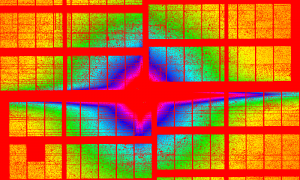
Science, Science & Technology A collaboration led by EMBL Hamburg’s Svergun Group used small-angle X-ray scattering (SAXS) at the European XFEL to obtain data on samples containing coronavirus spike proteins and antibodies that bind them.
2021
sciencescience-technology
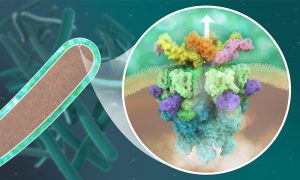
Science, Science & Technology EMBL Hamburg’s Wilmanns and Kosinski groups have determined the detailed structure of a bacterial protein complex critical for tuberculosis infection.
2021
sciencescience-technology
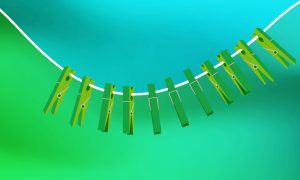
Science, Science & Technology Researchers at EMBL Hamburg reveal how peg-like proteins clasp and reshape the cell membrane
2021
sciencescience-technology
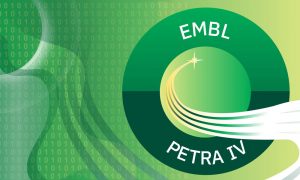
Events, Science & Technology A workshop run by EMBL Hamburg explored opportunities for structural biology at the future, upgraded PETRA IV synchrotron.
2021
eventsscience-technology
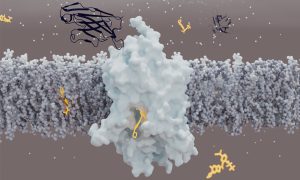
Science, Science & Technology Scientists have determined the structure of Glycine Transporter 1. The finding could open new avenues for developing therapeutics for psychiatric disorders
2021
sciencescience-technology
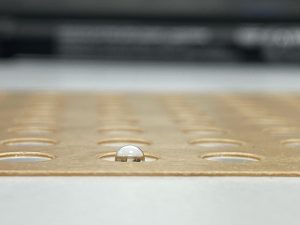
Picture of the week, Science & Technology Scientists at EMBL Hamburg use droplets of protein solution to grow protein crystals. By exposing the crystals to X-rays, they are able to determine the protein’s molecular structure.
2021
picture-of-the-weekscience-technology
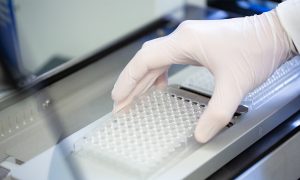
Connections, Lab Matters The Sample Preparation and Characterisation (SPC) Facility at EMBL Hamburg is one of the founding members of the Molecular-Scale Biophysics Research Infrastructure (MOSBRI). Within this new European initiative, the SPC Facility will offer services related to membrane proteins, protein complexes,…
2021
connectionslab-matters
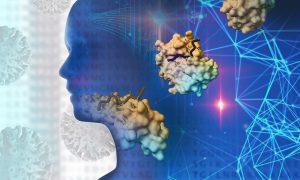
Science, Science & Technology Researchers at EMBL Heidelberg have identified sequences in human proteins that might be used by SARS-CoV-2 to infect cells. They have discovered that the virus might hijack certain cellular processes, and they discuss potentially relevant drugs for treating COVID-19.
2021
sciencescience-technology
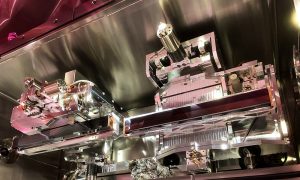
Picture of the week, Science & Technology Scientists at EMBL Hamburg use specially designed mirrors to reflect and focus X-ray beams onto tiny crystals made of proteins or other biological molecules.
2021
picture-of-the-weekscience-technology
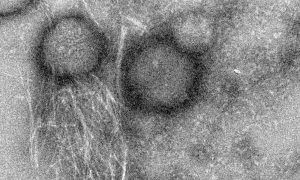
Science, Science & Technology Researchers at the Technion – Israel Institute of Technology and EMBL Hamburg, in collaboration with scientists in Israel and Spain, have discovered remarkable molecular properties of an antimicrobial peptide from the skin of the Australian toadlet. The discovery could inspire the development of…
2021
sciencescience-technology
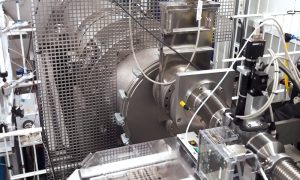
Science, Science & Technology Biotechnology company BioNTech and Johannes Gutenberg University Mainz conduct collaborative research with EMBL scientists at the beamline P12 in Hamburg
2020
sciencescience-technology
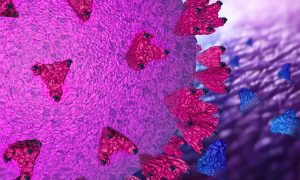
Science, Science & Technology By screening hundreds of sybodies (synthetic mini-antibodies), scientists have identified one that might stop SARS-CoV-2 from infecting human cells. This work, which holds promise for treating COVID-19, was conducted by EMBL Hamburg and collaborators from the Centre for Structural Systems Biology…
2020
sciencescience-technology
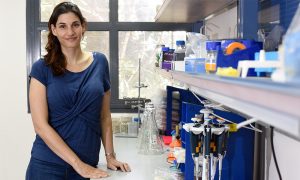
Lab Matters, People & Perspectives New associate group leader at EMBL Hamburg investigates the structure of functional amyloids in bacteria and in human disease
2020
lab-matterspeople-perspectives
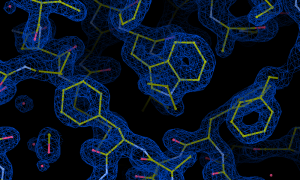
Science, Science & Technology A group of scientists led by EMBL Hamburg’s Christian Löw provide insights into the molecular structure of proteins involved in the gliding movements through which the parasites causing malaria and toxoplasmosis invade human cells.
2020
sciencescience-technology
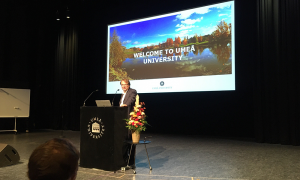
Connections, Events The partnership between EMBL and four Nordic research institutions aims to stimulate scientific exchange and inspire scientific collaborations. This year’s conference of the Nordic EMBL Partnership for Molecular Medicine included many talks by EMBL researchers and a presentation by EMBL’s…
2020
connectionsevents
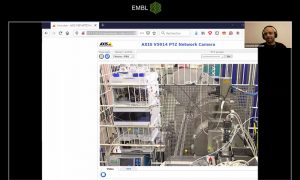
EMBL Announcements, Events The Svergun group at EMBL Hamburg has released the course ‘Solution Scattering from Biological Macromolecules’ in an online format for the first time. The course explores different aspects of small-angle X-ray scattering (SAXS) for studying the structure of macromolecules.
2020
embl-announcementsevents
No matching posts found
Looking for past print editions of EMBLetc.? Browse our archive, going back 20 years.
EMBLetc. archive